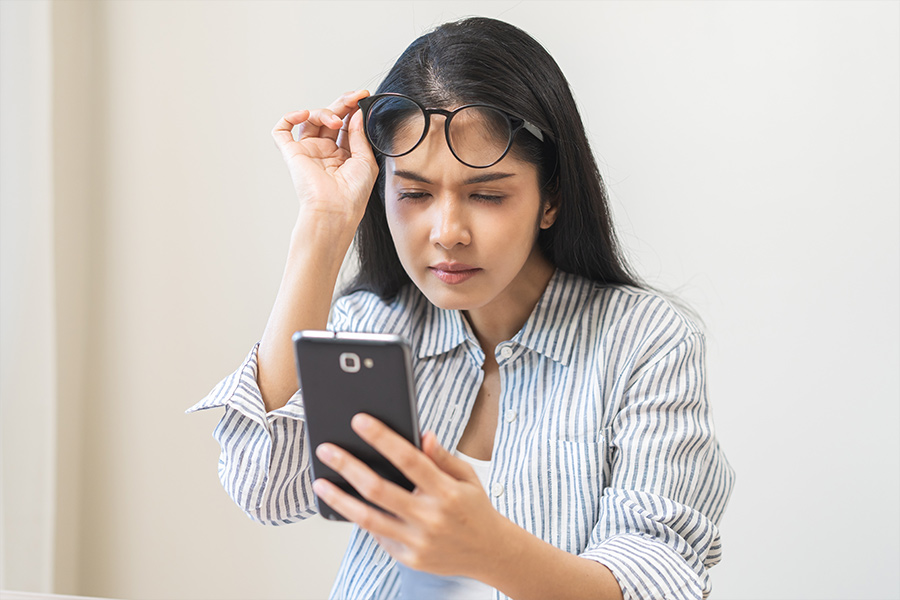
Can dry eyes cause blurred vision?
We all know the scratchy, gritty feeling of “dry eyes”, the irritation, occasional stinging, and that sense that something’s not quite right. But did you know that dry eyes can also lead to blurred or fluctuating vision? In this post, we’ll explore how and why dry eye disease can affect clarity of vision, what signs to look for, and what you can do about it.
What is dry eye disease?
Dry eye disease (or dry eye syndrome) arises when your eyes fail to produce enough quality tears, or when the tears evaporate too quickly, leaving your ocular surface insufficiently lubricated.
Healthy tears are more than just “water”, they’re a complex mixture of water, oil, and mucus layers that nourish, protect, and lubricate the eye. If any layer is out of balance, the tear film becomes unstable, leading to dryness, friction, and damage.
There are broadly two types of dry eye:
- Aqueous-deficient dry eye- insufficient tear (aqueous) production by tear glands
- Evaporative dry eye- tear film evaporates rapidly (often due to poor oil / lipid layer, Meibomian gland dysfunction)
Often, a person may suffer from a mix of both.
How dry eyes can lead to blurred vision
1. Tear film instability & surface irregularity
Blurred or fluctuating vision is one of the hallmark symptoms of dry eye. The smooth “optical surface” of the eye depends on a consistent tear film. When dry spots develop and the tear film breaks up, light passing through your eye becomes distorted. Studies show that inadequate tear production or poor tear quality leads to intermittent or fluctuating blurring.
2. Excessive reflex tearing
It may sound odd, but too many tears can also contribute to blur. When your eye surface is irritated, reflex tearing kicks in to flush the surface, but these excess, watery tears can temporarily smear vision, similar to looking through a wetted car windscreen.
3. Blinking and interblink interval disruption
When your eyes are dry, blinking becomes less effective. You may delay blinking or blink incompletely. That allows more areas of the cornea to become exposed and dry, accelerating tear breakup and causing blur.
4. Eye strain & fatigue
Dryness forces your visual system to struggle. Constant “micro-focusing” and ocular surface irritation may lead to fatigue or strain, exacerbating the perception of blurring, especially during tasks like reading or screen work.
5. Longer-term complications
If left unmanaged, severe dry eye can damage the corneal surface (the transparent “window” of the eye), creating superficial abrasions or irregularities which further degrade vision. In extreme cases, scarring or changes to the ocular surface may have lasting effects.
Signs that your blurred vision might be dry eye-related
Here are common indicators that dry eyes may be the culprit behind your blurry vision:
- Blurring that fluctuates (clear one moment, hazy the next)
- Blur worse after reading, screen use, or concentration
- A gritty, scratchy, or burning sensation
- Sensitivity to light (photophobia)
- Redness, watering, stringy mucus
- Feeling that your eyelids “stick” or drag across the eye
- Worsening symptoms in dry, windy, or air-conditioned environments
- Improvement (or temporary clarity) right after blinking or using lubricating drops
If your blurred vision is constant, sudden, or accompanied by other alarming signs (pain, flashes, shadows), it’s essential to seek urgent assessment, as these could indicate other eye conditions.
What you can do
At-home measures & lifestyle changes
These strategies can help ease symptoms and support eye comfort:
- Use artificial tears / lubricating drops throughout the day
- Warm compresses & eyelid hygiene — gently massage eyelids to help oil glands flow better
- Follow the 20-20-20 rule: every 20 minutes look at something 20 feet away for 20 seconds and blink often
- Use a humidifier in dry indoor environments
- Stay well-hydrated
- Wear wraparound sunglasses to protect eyes from wind, air currents, and irritants
- Blink intentionally, especially during screen use
- Evaluate and possibly adjust any medications that might worsen dryness (after consulting your GP or eye doctor)
These steps can provide relief, especially if your dry eye is mild or intermittent.
Professional assessment & treatment
At our clinic, we offer a full, tailored approach to diagnose and manage dry eye and its visual effects:
- Take a dry-eye self-test
- Comprehensive eye assessment
- Customized treatment plan
- Vision correction adjustments
- Long-term support & monitoring
Because dry eye is often chronic or recurrent, we schedule reviews, refine treatment, and help you maintain comfort and clarity long-term.
When to act now
If you often experience:
- Blurred or fluctuating vision
- Eye irritation or gritty discomfort
- Worsening symptoms during screen use or in dry settings
- Difficulty with night driving or low-light conditions
… then your dry eyes may be more than a nuisance. Taking action early helps prevent longer-term damage and preserves the quality of your vision.
Ready to find out if dry eyes are behind your blurry vision?
Take our suitability self-test now and see whether you are suitable for treatment at My Eye Clinic in Gosforth.
How bad are your dry eyes?
Take this quick self-test to check how severe your symptoms are and see what help you might need next




